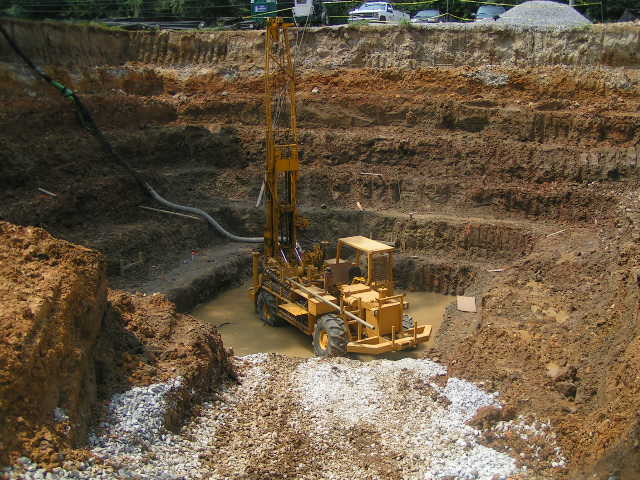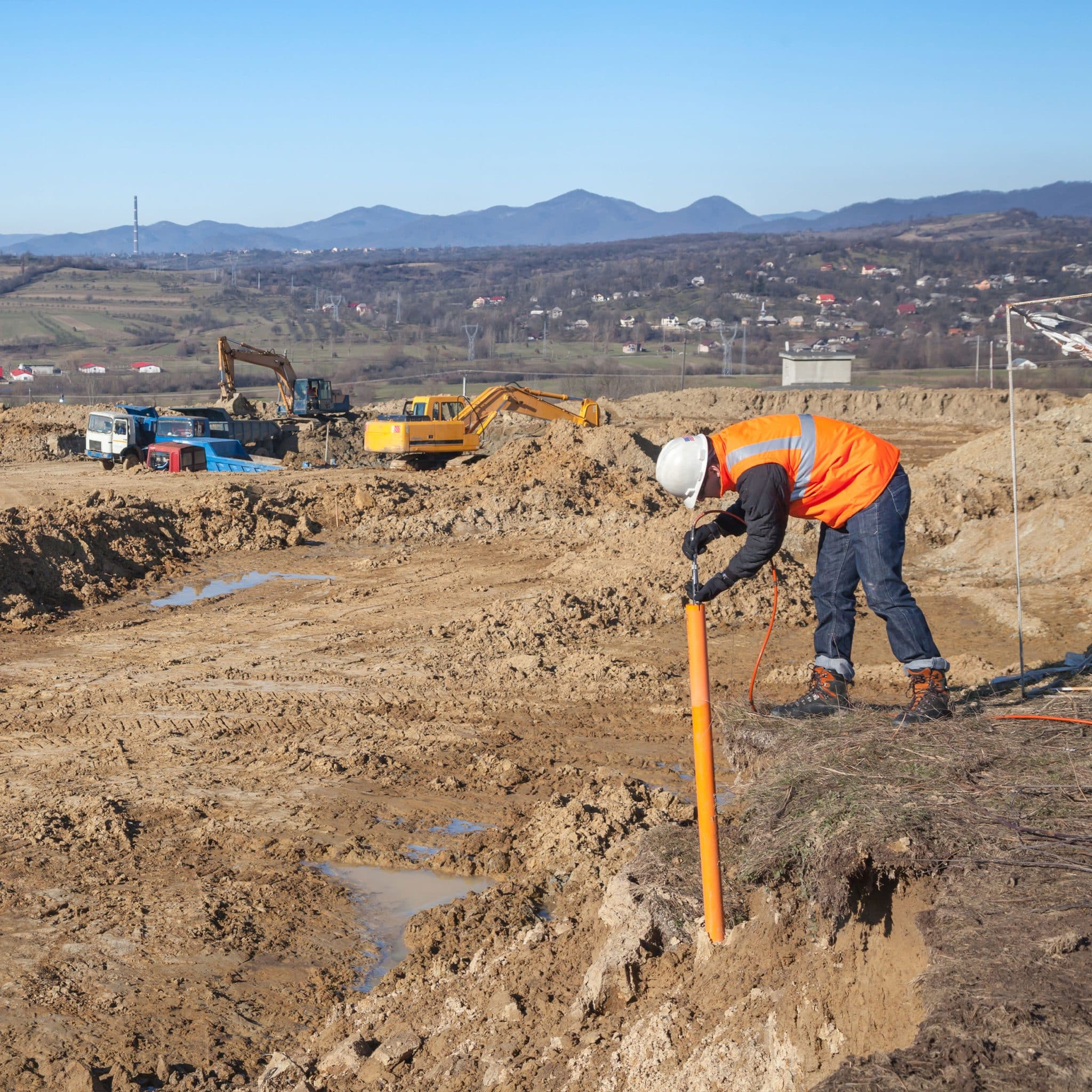Just How a Knowledgeable Tailings Engineer Can Optimize Your Mining Workflow
Just How a Knowledgeable Tailings Engineer Can Optimize Your Mining Workflow
Blog Article
Understanding the Crucial Function of the Geotechnical Industry in Modern Building And Construction Projects and Framework Development
The geotechnical market is a foundation of modern-day construction and facilities advancement, giving essential insights into soil behavior that straight affect project outcomes. Through innovative dirt assessments and innovative design services, geotechnical experts not just ensure structural honesty yet additionally address sustainability concerns amid progressing ecological criteria.
Relevance of Soil Analysis
Dirt analysis plays a critical function in the geotechnical sector, acting as the structure for notified decision-making in building and construction projects. Accurate soil evaluation is vital for determining the viability of a website for numerous types of frameworks, consisting of property homes, industrial structures, and bridges. By examining soil composition, dampness, stamina, and density web content, engineers can anticipate possible obstacles and reduce risks linked with ground instability, disintegration, and negotiation.
The analysis process usually involves a collection of tests and monitorings that supply important information regarding the subsurface problems. This data educates the style and construction processes, making certain that structures are constructed on solid ground with appropriate support. Recognizing the soil profile allows designers to select proper construction techniques and materials, maximizing resource use and lessening expenses.
In enhancement to making sure architectural integrity, soil assessment adds to ecological sustainability. By identifying potential contamination or damaging effects on bordering ecological communities, engineers can execute approaches to protect these all-natural sources. On the whole, comprehensive dirt assessment is essential in the geotechnical area, underpinning the safety and security, efficiency, and environmental duty of building and construction tasks.
Key Geotechnical Techniques
A range of essential geotechnical methods are used to analyze and boost the security and efficiency of building and construction sites. One fundamental approach is dirt sampling and screening, which allows designers to identify the physical and chemical properties of the ground. This details is important for making informed decisions regarding foundation layout and construction methods.
One more crucial strategy is website characterization, which includes the in-depth analysis of dirt and rock problems with techniques such as borehole drilling and in-situ screening. Techniques like Standard Infiltration Tests (SPT) and Cone Infiltration Tests (CPT) give beneficial information on soil toughness and stratigraphy.
Ground enhancement techniques, such as dirt stabilization and grouting, are additionally vital in enhancing the load-bearing ability of weak soils. These techniques can minimize negotiation and enhance overall website problems.
Furthermore, incline stability evaluation is essential for determining possible landslide threats and guaranteeing the security of excavations. This analysis typically employs mathematical modeling and limitation stability approaches to anticipate dirt habits under different conditions.
Including these geotechnical techniques into building preparation not just optimizes job outcomes however also makes sure the lasting sustainability of facilities growth.
Effect On Construction Safety

Furthermore, effective geotechnical design includes applying mitigation approaches for recognized risks. This may include soil stabilization strategies, retaining structures, or drain systems to alleviate hydrostatic pressure. By resolving these elements, construction teams can lower the possibility of mishaps and improve worker safety and weblink security.
Additionally, constant surveillance of site problems is vital throughout building and construction. Geotechnical instruments can offer real-time data concerning ground motion and security, permitting for timely interventions when required.
Fundamentally, the geotechnical sector plays a crucial duty in protecting building and construction projects. By prioritizing ground honesty and utilizing strenuous analysis approaches, the geotechnical sector not only protects the workforce but likewise adds to the longevity and integrity of created framework.
Sustainability in Geotechnical Practices

In addition, geotechnical engineers are now employing sophisticated innovations, such as geosynthetics, which improve soil stability check while decreasing the volume of product called for. This not only preserves sources however likewise leads to less waste generation (geo tech engineer). The assimilation of sustainable style principles into geotechnical engineering urges using sustainable power resources in building procedures, better lowering carbon discharges
By conducting these analyses, geotechnical specialists can create methods that mitigate damaging effects, guaranteeing compliance with environmental laws. Overall, the emphasis on sustainability within geotechnical methods not just contributes to the durability and strength of facilities but likewise advertises a responsible technique to land and resource management.
Future Trends in Geotechnical Design
Development is driving the future of geotechnical design, as arising technologies and methods improve the sector. The integration of innovative information analytics and expert system is set to change website investigation and threat analysis, enabling engineers to make more educated choices based on real-time data. The use of geosynthetic materials is getting traction, supplying sustainable solutions that enhance soil security and minimize ecological influence - consulting engineer.
An additional significant fad is the adoption of automated and robotic systems for tracking and building and construction procedures. These modern technologies not only boost precision yet likewise improve safety by lessening human participation in harmful settings. Additionally, the execution of Structure Information Modeling (BIM) in geotechnical style assists in enhanced collaboration amongst stakeholders, enhancing task delivery and lowering expenses.
As environment modification poses new challenges, the market is increasingly concentrating on durability and flexibility in layout methods, ensuring framework can endure severe weather events. Finally, the recurring pattern towards sustainability will drive advancement in environmentally friendly products Website and methods, straightening geotechnical engineering with broader ecological goals. Jointly, these fads will certainly form an extra reliable, lasting, and durable geotechnical landscape for future jobs.
Final Thought

The geotechnical market is a keystone of modern-day building and facilities development, providing crucial insights right into soil behavior that directly affect job results. engineer of record.Dirt analysis plays a crucial role in the geotechnical sector, offering as the foundation for informed decision-making in construction tasks. Generally, thorough dirt analysis is essential in the geotechnical field, underpinning the security, performance, and environmental obligation of construction projects
Construction safety and security is significantly influenced by geotechnical methods, as the stability and stability of the ground straight impact the total safety and security of a building and construction website.In final thought, the geotechnical industry is essential in modern-day construction and infrastructure development, giving important assessments that make sure architectural integrity and security.
Report this page